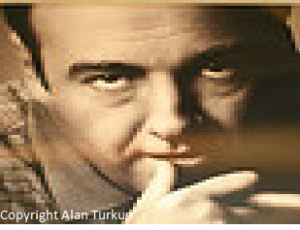
by Kathleen Lynch | Aug 30, 2013 | Entrepreneur
Recently, I was discussing with one of my clients what strategy to implement in moving forward with a provisional patent application filed less than a year ago. Our discussions highlighted the pros and cons of filing domestically or internationally, especially for an individual entrepreneur or small business. Here are some thoughts.
First, a note about the provisional patent system. For most parties involved, the provisional patent system is a good one. Especially in view of the new America Invents Act, where priority is given to the first inventor to file, the provisional system provides an effective and relatively inexpensive way to preserve priority while fine tuning your invention. In addition, once the provisional application is filed, you have up to a year to file a US utility application or seek protection on an international scale. In either case, the time provides an opportunity for increasing marketing efforts as well as further development of the invention.
For an individual entrepreneur or small business, there are obvious advantages to filing exclusively in the US. First, the cost benefit of filing in the US is noticeably less (for a small entity it is about $800 vs. $3500 internationally). In addition, the US markets are perhaps more developed and known at the time of initial development. However, an international application, even with its increased cost, will provide a platform from which multinational patent protection may be obtained. This may be a very attractive feature for a prospective investor or buyer. The option to seek patent protection in much of the world may outweigh the more costly upfront fees. In addition, once the international application is filed, the decision regarding national phase filing will not expire for roughly 18 months. In this rather substantial window of time, a marketing plan may be developed in which a third party may wish to assume the costs of the national phase filing or buy the innovation outright. At any rate, I believe an international patent filing strategy is certainly something to consider when weighing your patent filing options.

by Kathleen Lynch | Jul 8, 2013 | Patent
Usually the Patent Office website provides a gateway to other information, such as a patent or trademark search information, related forms, general information, etc. However, on the home page, there are news items and information worth checking out. One of those is the IP Awareness Assessment Tool. This tool provides basic information for inventors and small businesses to help identify IP needs. In particular, the tool is a series of questions posed to help you understand what IP you may have and/or what IP you may want to protect. For example, you may think that you may need a copyright registration to protect your marketing material, but in fact, it might be more appropriately addressed and protected by trademark or service mark registration.
Having checked out the pre-assessment tool myself, I think it is a helpful starting point to those who are individual entrepreneurs, or small businesses who have not yet sought any IP advice. However, I would not rely on the tool alone and would seek advise from an attorney experienced in IP issues.

by Kathleen Lynch | Jun 25, 2013 | Uncategorized
Confidentiality agreements are one of those things that most people think of in the beginning of a commercial relationship. But once the agreement is signed, its a bit like Tony Soprano’s favorite phrase, most people just forget about it. There are a few aspects of any confidentiality agreement that need to be remembered and entered into a system for tracking.
Dates:
First, the dates of execution, termination and window of information exchange should be noted. These dates enable those individuals interacting with the other party to the agreement to be aware of when any disclosure must end and when any obligations under the agreement will terminate. Sometimes at the end of the agreement, information and/or samples must be returned or archived.
Subject Matter:
Anyone involved in the exchange of information must be aware of the scope of the subject matter involved. If the agreement is limited to your company’s technology “A”, then any discussion outside the scope of that technology should not be broached in a confidential manner without an agreement in place.
Agreement Obligations:
Anyone involved in the commercial relationship with the other party to a confidentiality agreement needs to be familiar with the basic obligations called out in the document. In particular, anyone interacting with the other party in the exchange of proprietary information should be familiar with the marking provisions. In other words, those involved from your company need to know whether they must mark any of your company’s confidential material as “Confidential.” Some agreements require it and others do not. Those involved must also be familiar with the procedures involved in handling incoming proprietary information from the other party.
Follow Up:
Those involved in a collaborative effort where there are confidentiality obligations may need to follow up after a confidential disclosure has been made. In some agreements, there are provisions for following up with the other party after a disclosure has been made either verbally or visually. These may include information displayed on a whiteboard or drawings exchanged on a shared computer screen during a phone or video conference. These typically come in the form of a communication referencing the time and type of disclosure and reminding the recipient of the confidential nature of the communication. Sometimes written follow up is required within a certain time frame after the initial disclosure of verbal or visual information. Those in contact with the other party should be able to identify confidential information being disclosed and what appropriate procedures and follow up are required by the agreement. I should note that some agreements do not have a follow up provision. In that case, any disclosure made without a “Confidential” notice at the time of disclosure may not be protected by the agreement. Anyone in the organization involved in the disclosure of confidential information should be made aware of this and act accordingly.

by Kathleen Lynch | May 11, 2013 | Patent
One provision in the America Invents Act enables a third party to submit to the U.S. Patent Office prior art patent references and publications relevant to a published application. This can be done in for up to six months from publication, before the first Office Action, or notice of allowance, the latter of the three. The party submitting the information must point out the relevance of the patent references and publications. A party may submit up to three references without cost. After that, the cost is $180 for ten.
This new procedure enables anyone to provide further insight and assist with ensuring that the patentability hurdle is cleared. However, this can also prove to be a double edged sword. If a submission is reviewed by the patent examiner and the patent issues, then the weight and deference given to the examination process may prejudice any subsequent challenges after issuance. As a result, pre-grant submissions should be carefully considered before filing.
Companies should have in place or begin structuring a review or “watch” process or system. This would track areas of technology relevant to corporate interests, including particular known inventors, and competitor companies (although assignments may not be in place by publication date and may prove to be more difficult to track). This system will help companies to keep track of what is in the patent pipeline and to prepare for a pre-grant submission if it is deemed appropriate. As Thomas Edison once said “good fortune often happens when opportunity meets with preparation.” So, when it comes to pre-grant submissions, be prepared.

by Kathleen Lynch | Apr 24, 2013 | Patent
We hear a lot these days about cost cutting and austerity. I also hear a bit of grousing from time to time from people who use IP legal services about costs. I believe inventors and companies can find reasonably priced intellectual property law services when the potential client does her homework.
First, check out smaller cities, towns and suburbs. Larger cities have higher overhead costs. Firms pay more for rent, salaries etc. Smaller cities and towns have many talented patent firms, attorneys and agents equally qualified to do the work at more reasonable rates.
If you are focusing on patent preparation and prosecution, you don’t need to stay in your own backyard. With the internet, Skype, and all of the wonderful modern tools of connectedness, your patent agent or attorney can be as close or as far away as you want them to be. Documents are easily exchanged via the internet, and telephone and video conferences can connect folks who are time zones apart. Where there is a significant distance, time zones may become an issue, but you will find that most patent attorneys and agents are willing to provide the necessary flexibility to make the relationship work, including trips to your offices at a discount or gratis in exchange for keeping your business.
Background matters. Take a look and ask questions about what kind of work your patent attorney does. What was his or her major in college? Did they work as a scientist or engineer before they practiced patent law? If so, what did they do? What is the focus of their present practice? If you are looking for someone to prepare and file a patent application, you don’t want to work with someone whose experience is limited to patent litigation. Just like you wouldn’t allow your internist to perform heart surgery, you don’t want someone with a chemistry background preparing patent applications for you if you are in the high tech industry. Find someone who has the technical background suited to your project, as well as the experience needed to meet your needs. In looking for possible patent attorneys or agents, check out the US Patent and Trademark website which enables you to search either for a particular person or those registered to practice before the US Patent Office in a particular location. Once you have that, check out their credentials and ask questions before you make your decision.
Selecting the right patent attorney is important to ensure your patent strategy is managed by someone with the appropriate experience and background. The Law Office of Kathleen Lynch PLLC has over 20 years of experience in the preparation and prosecution of patent applications and is designed to help businesses such as yours keep ahead of the game. The first telephone consultation is free. Email us at [email protected].
Page 16 of 17« First«...10...1314151617»









